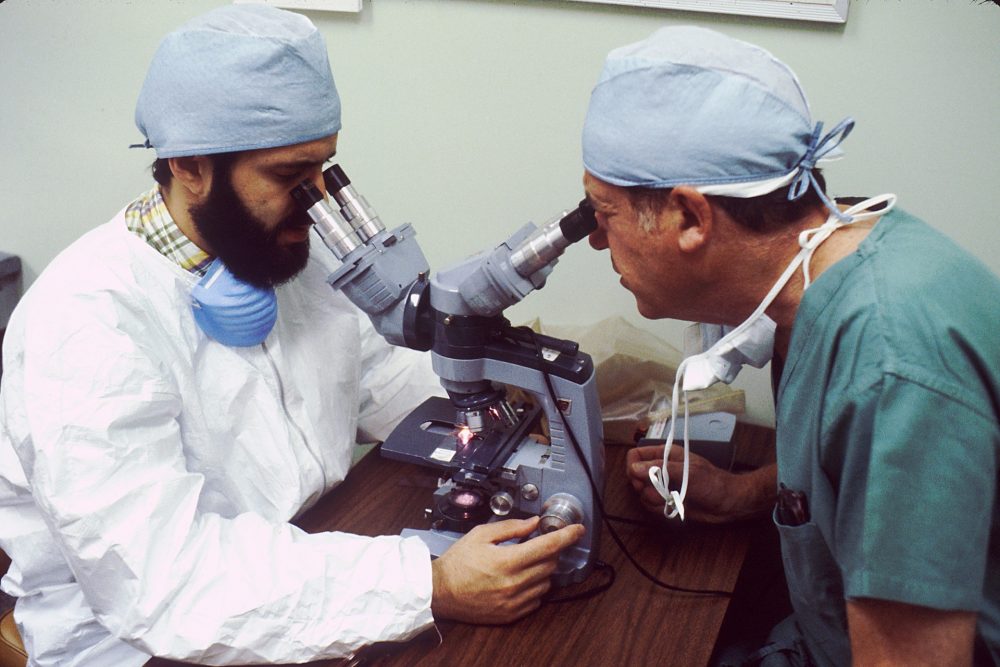In biology, one of the most important concepts is diffusion. It is an essential function in every living organism because it facilitates the movement of materials such as nutrients, salts, sugar, and waste from one point to another. To help you understand the concept, we are going to demystify ‘what is diffusion in biology.’
What Is Diffusion In Biology?

Figure 1: A simple demonstration of diffusion
What does diffusion mean in biology? To demystify the concept of diffusion, we will first take a closer look at its meaning. Diffusion is defined as the net passive movement of particles such as molecules, ions, and atoms from an area of high concentration to another where they are in low concentration. In cellular diffusion, it is important to note three things that come into play:
The movement of particles continues until equilibrium is achieved. This is the point where the particles are equal on both sides.
Because cellular diffusion takes place across a concentration gradient, there is no need for chemical energy [Adenosine triphosphate (ATP)].
Diffusion is dependent on random particle walk. This means that it culminates in mass transport without needing directed bulk flow. In the case of bulk flow, the movement is caused by pressure
When looking at diffusion definition, the rate of particle movement is affected by a number of factors. One, if the distance that particles are traveling is shorter, and the concentration gradient is high, the diffusion rate will be faster. Other factors that help to accelerate the rate of diffusion include high temperatures, large surface area, and small particles.
Types Of Cellular Diffusion
Taking a closer look at diffusion in biology shows that it can be broken into two types; simple and assisted.
- Simple Diffusion
In this type of diffusion, particles or solutes move along a concentration gradient. There is no aid required for the particle to move from one part to another. See the demonstration in Figure 2 below.
Figure 2: A demonstration of Simple DiffusionIn the diagram, the green arrow shows the concentration gradient while the blue one shows the movement of the particles from the left (concentrated area) to the right (less concentrated area). After some time, the concentration of carbon dioxide (CO2) molecules on both sides will be equal.
- Assisted Diffusion
In the case of assisted diffusion, the movement of particles is still across a concentration gradient (from high to low concentration), but with some help. The help is usually through transport proteins stationed at the plasma membrane. Unlike the case of enzymes, the carriers are highly specific and only take molecules of specific shapes, sizes, or charge depending on the situation (see figure 3). Common molecules moved through assisted diffusion include amino acids and glucose. Besides, no energy is needed to move the molecules across a membrane.
Figure 3: Image showing glucose carrier protein in assisted diffusion - A brief note on osmosis
Some publications do not consider osmosis as diffusion. However, it is a special type of diffusion. Just like simple diffusion, osmosis is the movement of a solvent from an area of high concentration to another of low concentration, but through a semi-permeable membrane. The notion of semi-permeable membrane implies that only some selected solutes are allowed through while others are blocked, even if the concentration gradient differs. A good example of a semi-permeable membrane is a plant or animal cell.
Examples of Passive Diffusion in Biology
Diffusion is applied progressively to help move substances in plants and animals. To demonstrate this, here are real examples of diffusion to help you understand the concept better, brought to you buy our biology assignment help writers.
- Gas exchange in the human lungs
In the lungs, oxygen and carbon dioxide are exchanged based on varying concentration gradients in the alveoli. When breathing out, a high concentration of carbon dioxide diffuses from the lungs as oxygen is absorbed. This is a case of simple diffusion.- Glucose transport
Glucose is a 6-carbon sugar that helps to provide energy to cells. But because it is too large, moving it even across a concentration gradient is difficult. This is why a special carrier protein is needed. The carrier protein binds to glucose molecules to alter its shape and make it easy to transport across the membrane.- Gas exchange for photosynthesis
In plants’ leaves, stomata provide the perfect point for gas exchange. High carbon dioxide in the atmosphere diffuses into the leaves while oxygen is emitted. This is another example of simple diffusion.- Nutrients uptake in plant roots
In the roots of plants, selected minerals are absorbed from the soil across a semi-permeable membrane. This is a perfect case of osmosis.- Nutrients uptake in bacteria
For simple organisms such as bacteria, the main method of getting nutrients is diffusion. They rely on simple diffusion to get water, nutrients, and oxygen to their cytoplasm. Bacteria do not have specialized organelles for holding transport substances and have to rely on diffusion to get the important materials for survival.
Cellular Diffusion Can Be Interesting, Right?
Understanding cellular diffusion is indeed fun because you are learning what happens in your body, in the plants, and the environment. To understand it better, make sure to go back to the basics of anatomy and expound on them. This will make biology more interesting.
If you face some difficulties answering diffusion or other biology questions, you should not shy from seeking help. Homework services for students have expert writers who understand every aspect of biology and how to answer related questions. Whether you have engagement elsewhere, the deadline is tight, or do not have the required skills, do not give up. Let our experts at Assignment Geek provide affordable writing services to assist you!














